Bitcoin (BTC): Complete Guide to the World’s First Cryptocurrency
Bitcoin has transformed from an experimental digital currency worth fractions of a penny to a revolutionary financial asset reaching new record highs in 2025. As the world’s first cryptocurrency, Bitcoin continues to reshape how we think about money, payments, and financial sovereignty in 2025.
This comprehensive guide explores everything you need to know about Bitcoin (BTC)—from its fundamental technology and current market trends to practical investment strategies and future outlook. Whether you’re a complete beginner or looking to deepen your understanding, this article provides the essential knowledge to navigate the Bitcoin ecosystem confidently.
Key Takeaways
- Bitcoin reached new all-time highs above $123,000 in 2025, driven by institutional adoption and Bitcoin ETF approval in January 2024.
- The cryptocurrency operates on a fixed supply of 21 million coins with current mining rewards at 3.125 BTC per block following the April 2024 halving.
- Major corporations like MicroStrategy hold over 629,000 bitcoins as treasury assets, demonstrating growing institutional confidence.
- Bitcoin ETFs have attracted record-breaking inflows, making the cryptocurrency accessible through traditional brokerage accounts.
- Layer 2 solutions like Lightning Network are expanding Bitcoin’s utility beyond store of value to enable fast, low-cost payments and micropayments.
What is Bitcoin? Understanding Digital Currency
Bitcoin is a decentralized digital currency that operates without the need for traditional financial institutions like banks or governments. Created in 2008 by the pseudonymous Satoshi Nakamoto, Bitcoin represents the first successful implementation of peer-to-peer electronic cash that solved the double-spending problem without requiring a trusted third party.
Unlike traditional currencies controlled by central banks, Bitcoin operates on a distributed network of computers called nodes. Each transaction is verified by network participants through a process called mining, which ensures the integrity and security of the entire system.
The revolutionary aspect of Bitcoin lies in its blockchain technology—a public, immutable ledger that records every transaction. This transparency, combined with cryptographic security, creates a trustless system where participants can transact directly without intermediaries.
Key Bitcoin Features and Blockchain Technology
Bitcoin’s design incorporates several groundbreaking features that distinguish it from traditional monetary systems:
- Fixed Supply: Only 21 million bitcoins will ever exist, making it inherently scarce and deflationary. This scarcity model contrasts sharply with fiat currencies that can be printed indefinitely.
- Decentralization: No single entity controls Bitcoin. The network is maintained by thousands of nodes worldwide, ensuring resilience against censorship and single points of failure.
- Pseudonymity: While all transactions are public on the blockchain, users are identified only by their wallet addresses, not personal information.
- Global Accessibility: Bitcoin operates 24/7 and can be sent anywhere in the world within minutes, regardless of traditional banking hours or international borders.
*BTN- Trade Bitcoin on MEXC Now&BTNURL=https://www.mexc.com/price/BTC *
How Bitcoin Works: Mining and Transaction Process
Understanding Bitcoin requires grasping the underlying blockchain technology that powers the network. Think of blockchain as a digital ledger that’s copied across thousands of computers worldwide, with each new “page” (block) building upon the previous one to create an unchangeable historical record.
The Bitcoin Mining Process
Bitcoin mining is the process by which new bitcoins are created and transactions are verified. Miners use powerful computers to solve complex mathematical puzzles, and the first to solve the puzzle gets to add a new block to the blockchain and receives a reward.
This proof-of-work consensus mechanism ensures network security by making it extremely expensive to attack or manipulate the blockchain. Currently, miners receive 3.125 bitcoins per block as a reward, though this amount is halved approximately every four years in an event called the “halving.”
The Bitcoin network processes transactions approximately every 10 minutes, with each block containing hundreds or thousands of individual transactions. The difficulty of mining automatically adjusts to maintain this 10-minute average, regardless of how many miners are participating.
Transaction Verification and Security
When you send Bitcoin, your transaction is broadcast to the entire network for verification. Miners collect these pending transactions and verify them by checking digital signatures and ensuring the sender has sufficient funds.
Once verified, transactions are bundled into a block and permanently recorded on the blockchain. The more blocks that are added after your transaction (called confirmations), the more secure it becomes. Most exchanges and services consider a transaction final after six confirmations, which typically takes about one hour.
This verification process eliminates the need for traditional financial intermediaries while providing security through mathematical proof rather than trust in institutions.
To understand Bitcoin’s mechanics in greater detail, read our complete beginner’s guide to how Bitcoin works, which breaks down complex concepts into simple terms.
Bitcoin Price Analysis and Market Trends
Bitcoin’s price has experienced remarkable growth and volatility since its inception. From trading for less than $1 in 2010 to reaching new all-time highs above $123,000 in 2025, Bitcoin has established itself as both a store of value and a speculative investment asset.
Current Market Performance and 2025 Trends
The cryptocurrency market in 2025 has been characterized by increased institutional adoption and regulatory clarity. Bitcoin has reached new record highs in 2025, driven by several key factors:
- Institutional Investment: Major corporations like MicroStrategy continue to add Bitcoin to their treasury reserves, with MicroStrategy maintaining one of the largest corporate Bitcoin holdings.
- ETF Adoption: Bitcoin exchange-traded funds (ETFs) have seen massive inflows, with record-breaking weekly net inflows, making Bitcoin accessible to traditional investors.
- Regulatory Progress: Clearer regulations and potential strategic Bitcoin reserves by governments have reduced uncertainty and boosted investor confidence.
- Corporate Adoption: Companies across various sectors are integrating Bitcoin payments and treasury strategies, further legitimizing its use as a business asset.
Understanding Bitcoin’s Four-Year Cycles
Historically, Bitcoin has followed four-year cycles closely tied to halving events. These cycles typically feature:
- Accumulation Phase: Following a major price decline, Bitcoin trades sideways while early adopters accumulate
- Growth Phase: Institutional and retail interest increases, driving steady price appreciation
- Euphoria Phase: Mainstream attention peaks, leading to rapid price increases and new all-time highs
- Correction Phase: Prices decline significantly, beginning a new cycle
However, many analysts believe the traditional four-year cycle may be breaking in 2025. The approval of Bitcoin ETFs in January 2024 brought institutional flows that “front-ran” typical post-halving price discovery, fundamentally altering market dynamics.
Price Predictions and Expert Forecasts
Industry experts have varying predictions for Bitcoin’s price trajectory through 2025 and beyond:
- Conservative Estimates: Technical analysis suggests Bitcoin may find support and resistance at various levels throughout 2025.
- Optimistic Projections: Some analysts predict Bitcoin could reach new heights by the end of 2025, with the most bullish forecasts suggesting significant upward potential.
- Long-term Outlook: Looking toward 2030, predictions range from $145,000 to $500,000, though these projections should be viewed with appropriate skepticism given the market’s volatility.
For detailed mathematical analysis of Bitcoin’s price patterns, explore our Bitcoin Power Law guide, which reveals the scientific principles behind Bitcoin’s growth trajectory.

How to Buy Bitcoin: Step-by-Step Guide
MEXC is a leading cryptocurrency exchange that serves over 40 million users across 170+ countries, known for its user-friendly interface, extremely low fees, and wide variety of crypto assets including over 3,000 cryptocurrencies. Here’s how to buy Bitcoin on MEXC step-by-step.
Why Choose MEXC for Bitcoin Trading
MEXC offers several advantages including competitive fees (0.02% for futures takers and 0.00% for makers), deep liquidity, and industry-leading order execution.
Step-by-Step Bitcoin Purchase Process on MEXC
- Step 1: Visit the MEXC official website (www.mexc.com) and click “Sign Up” to create your account using either your email address or phone number.
- Step 2: Verify your email or phone number by entering the 6-digit verification code sent to your registered contact method.
- Step 3: Enable two-factor authentication (2FA) via Google Authenticator or SMS verification for enhanced account security.
- Step 4: Navigate to the “Buy Crypto” section and choose your preferred purchase method: Quick Buy, Credit/Debit Card, Bank Transfer, or P2P Trading.
- Step 5: Select Bitcoin (BTC) from the cryptocurrency list and enter the amount you wish to purchase in either your local currency or BTC units.
- Step 6: Review the transaction details including fees and exchange rate, then confirm your purchase order.
- Step 7: Complete the payment using your selected method – card payments are processed instantly while bank transfers may take 1-3 business days.
- Step 8: Once payment is confirmed, your Bitcoin will be credited to your MEXC spot wallet and available for trading or withdrawal.
- Step 9: Consider transferring your Bitcoin to a personal hardware wallet for maximum security if you plan to hold long-term.
MEXC Trading Options and Fees
MEXC offers extremely competitive fees with spot trading fees as low as 0.05% for both makers and takers, and futures trading fees starting at 0.02% for takers. MX token holders receive additional fee discounts of up to 50%. The platform supports over 100 payment methods including Visa, Mastercard, bank transfers via SEPA and SWIFT, and P2P trading with local currencies.
*BTN- Trade Bitcoin on MEXC Now&BTNURL=https://www.mexc.com/price/BTC *
Bitcoin Wallets: Cryptocurrency Storage Solutions
Proper storage is crucial for Bitcoin security. The phrase “not your keys, not your coins” emphasizes the importance of controlling your private keys rather than leaving Bitcoin on exchanges.
Types of Bitcoin Wallets
- Hot Wallets: Internet-connected software wallets offering convenience for frequent transactions. Examples include mobile apps like BlueWallet or desktop software like Electrum.
- Cold Wallets: Offline storage solutions providing maximum security for long-term holdings. Hardware wallets like Ledger Nano S Plus or Trezor Model T are popular choices.
- Paper Wallets: Physical documents containing Bitcoin addresses and private keys, offering air-gapped security but requiring careful handling.
- Multi-signature Wallets: Advanced solutions requiring multiple signatures to authorize transactions, ideal for businesses or high-value holdings.
Best Practices for Bitcoin Security
Implementing these security measures protects your Bitcoin investment:
- Never Share Private Keys: Your private keys provide complete control over your Bitcoin. Never share them or store them online
- Use Hardware Wallets: For significant holdings, hardware wallets provide the best balance of security and usability
- Create Secure Backups: Write down your seed phrase and store it in multiple secure locations
- Verify Addresses: Always double-check recipient addresses before sending transactions
- Keep Software Updated: Regularly update wallet software to maintain security protections
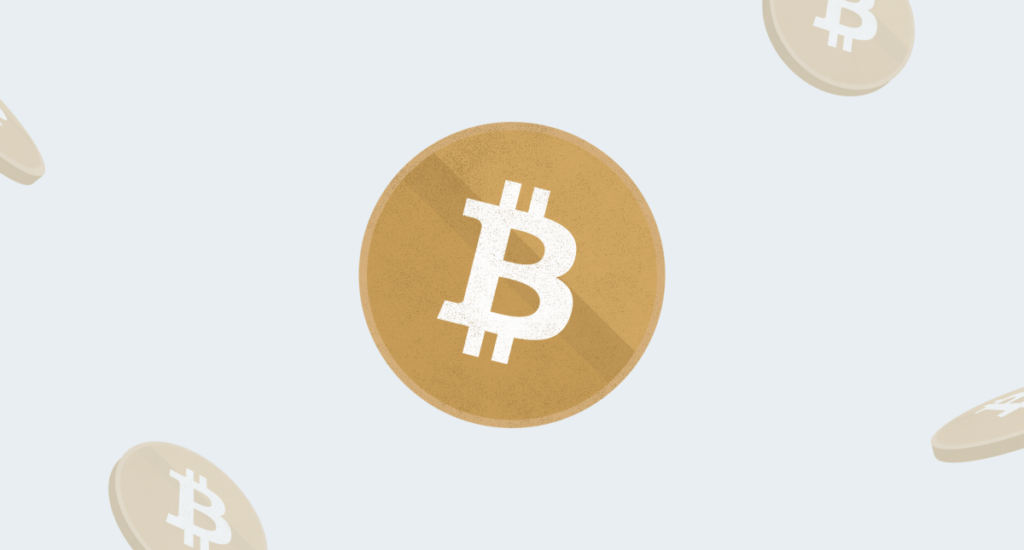
Bitcoin Mining: Network Security and Economics
Bitcoin mining serves two critical functions: securing the network through computational work and distributing new bitcoins into circulation. Understanding mining helps explain Bitcoin’s security model and economic incentives.
What is Bitcoin Mining?
Mining involves using specialized computers to solve complex mathematical puzzles. Miners compete to find a solution first, with the winner earning the right to add a new block to the blockchain and receive the block reward.
This process requires significant computational power and electricity, creating a real-world cost to secure the network. The difficulty automatically adjusts every 2,016 blocks (approximately two weeks) to maintain the 10-minute block time regardless of total network power.
Mining Economics in 2025
Bitcoin mining has evolved into a sophisticated industry with several key characteristics:
- Professional Operations: Most mining is now conducted by large-scale operations with access to cheap electricity and specialized hardware.
- Environmental Considerations: The industry increasingly focuses on renewable energy sources, with many operations using solar, wind, or hydroelectric power.
- Geographic Distribution: Mining operations have spread globally, with significant activity in the United States, Kazakhstan, Russia, and Canada.
- Hardware Requirements: Modern mining requires ASIC (Application-Specific Integrated Circuit) devices designed specifically for Bitcoin mining.
Bitcoin Use Cases and Real-World Applications
Bitcoin’s utility extends far beyond speculative trading. The cryptocurrency serves multiple practical functions in the modern economy.
1. Store of Value and Digital Gold
Many investors view Bitcoin as “digital gold”—a hedge against inflation and currency debasement. This perspective is supported by:
- Scarcity: The fixed 21-million supply cap creates mathematical scarcity similar to precious metals
- Portability: Unlike physical gold, Bitcoin can be transported instantly across borders
- Divisibility: Each bitcoin can be divided into 100 million satoshis, allowing for precise transactions
- Durability: Properly stored Bitcoin cannot degrade or be destroyed
2. Corporate Treasury Adoption
Forward-thinking companies have added Bitcoin to their balance sheets as a treasury asset:
- MicroStrategy: Holds over 629,000 bitcoins, demonstrating corporate confidence in Bitcoin’s long-term value
- Tesla: Has experimented with Bitcoin payments and treasury holdings
- Block (formerly Square): Regularly purchases Bitcoin for corporate reserves
- Metaplanet: Has been actively acquiring Bitcoin for its corporate treasury
3. Cross-Border Payments and Remittances
Bitcoin enables fast, relatively inexpensive international transfers:
- Speed: Transactions settle within hours compared to days for traditional banking
- Cost: Network fees are often lower than traditional remittance services
- Accessibility: Available to anyone with internet access, regardless of banking infrastructure
- Transparency: All transactions are publicly verifiable on the blockchain
*BTN- Trade Bitcoin on MEXC Now&BTNURL=https://www.mexc.com/price/BTC *
Bitcoin vs ETH, SOL, XRP, ADA
While Bitcoin remains the undisputed king of cryptocurrencies, understanding how it compares to other major digital assets helps investors make informed decisions. Here’s how Bitcoin stacks up against the top cryptocurrencies in the market.
Bitcoin vs Ethereum (ETH)
Bitcoin and Ethereum serve different primary purposes in the crypto ecosystem. Bitcoin focuses on being digital money and a store of value, while Ethereum operates as a programmable blockchain platform for smart contracts and decentralized applications.
Key Differences:
- Purpose: Bitcoin is primarily digital gold; Ethereum is a smart contract platform
- Transaction Speed: Bitcoin processes ~7 TPS; Ethereum handles ~15 TPS
- Energy Consumption: Bitcoin uses Proof-of-Work; Ethereum transitioned to Proof-of-Stake
- Use Cases: Bitcoin excels as a store of value; Ethereum powers DeFi and NFTs
Bitcoin vs Solana (SOL)
Solana positions itself as a high-performance blockchain capable of processing thousands of transactions per second, making it popular for decentralized applications and DeFi protocols.
Key Differences:
- Speed: Bitcoin ~7 TPS vs Solana ~3,000+ TPS
- Consensus: Bitcoin uses Proof-of-Work; Solana uses Proof-of-History
- Decentralization: Bitcoin has higher decentralization; Solana prioritizes speed
- Network Stability: Bitcoin has 15+ years of uptime; Solana has experienced outages
Bitcoin vs Ripple (XRP)
XRP was designed specifically for cross-border payments and banking institutions, offering fast and low-cost international transfers.
Key Differences:
- Target Market: Bitcoin serves as digital gold; XRP targets banking and remittances
- Supply: Bitcoin capped at 21 million; XRP has 100 billion total supply
- Transaction Cost: Bitcoin fees vary ($1-50); XRP fees are consistently low (~$0.0002)
- Decentralization: Bitcoin is fully decentralized; XRP faces centralization concerns
Bitcoin vs Cardano (ADA)
Cardano emphasizes academic research and peer-reviewed development, positioning itself as a more sustainable and scalable blockchain platform.
Key Differences:
- Development Approach: Bitcoin prioritizes security; Cardano focuses on research-driven development
- Environmental Impact: Bitcoin high energy use; Cardano designed for sustainability
- Smart Contracts: Bitcoin limited programmability; Cardano offers advanced smart contracts
- Governance: Bitcoin informal governance; Cardano has structured on-chain governance
For comprehensive comparisons between Bitcoin and other major assets including USD, gold, and stocks, see our complete BTC comparison guide.
Comparative Overview Table
|
Feature |
Bitcoin (BTC) |
Ethereum (ETH) |
Solana (SOL) |
Ripple (XRP) |
Cardano (ADA) |
|
Primary Purpose |
Digital gold/Store of value |
Smart contract platform |
High-speed DeFi/dApps |
Cross-border payments |
Sustainable blockchain |
|
Launch Year |
2009 |
2015 |
2020 |
2012 |
2017 |
|
Consensus |
Proof-of-Work |
Proof-of-Stake |
Proof-of-History |
Federated consensus |
Proof-of-Stake |
|
Max Supply |
21 million |
No cap |
No cap |
100 billion |
45 billion |
|
Transaction Speed |
~7 TPS |
~15 TPS |
~3,000 TPS |
~1,500 TPS |
~250 TPS |
|
Block Time |
~10 minutes |
~12 seconds |
~0.4 seconds |
~3-5 seconds |
~20 seconds |
|
Energy Efficient |
No |
Yes |
Yes |
Yes |
Yes |
|
Smart Contracts |
Limited |
Advanced |
Advanced |
Limited |
Advanced |
|
Market Cap Rank |
#1 |
#2 |
#4-6 |
#6-8 |
#8-10 |
|
Best For |
Long-term holding |
DeFi & NFTs |
High-speed trading |
Banking payments |
Academic projects |

Bitcoin ETFs and Investment Vehicles
The approval of spot Bitcoin ETFs in January 2024 marked a watershed moment for institutional Bitcoin adoption, making the cryptocurrency accessible through traditional brokerage accounts.
Understanding Bitcoin ETFs
Bitcoin ETFs are investment funds that track the price of Bitcoin without requiring investors to directly hold the cryptocurrency. These funds purchase and custody Bitcoin on behalf of shareholders, offering several advantages:
- Regulatory Oversight: ETFs operate under established financial regulations and oversight
- Professional Custody: Eliminates the need for individual investors to manage private keys
- Tax Efficiency: May offer more favorable tax treatment compared to direct Bitcoin ownership
- Accessibility: Available through standard brokerage accounts without specialized cryptocurrency exchanges
Major Bitcoin ETF Providers
Several prominent financial institutions now offer Bitcoin ETFs:
- BlackRock (IBIT): The world’s largest asset manager’s Bitcoin ETF
- Fidelity (FBTC): Backed by Fidelity’s institutional custody solutions
- Grayscale (GBTC): Converted from a trust structure to an ETF format
- VanEck (HODL): Focused on long-term Bitcoin exposure
ETF Performance and Market Impact
Bitcoin ETFs have demonstrated remarkable success since launch:
- Massive Inflows: Record weeks have seen over $2.9 billion in net inflows
- Price Impact: ETF demand has contributed to Bitcoin’s price appreciation
- Institutional Adoption: Traditional financial advisors can now recommend Bitcoin exposure to clients
- Market Maturation: ETFs have helped legitimize Bitcoin as an institutional asset class
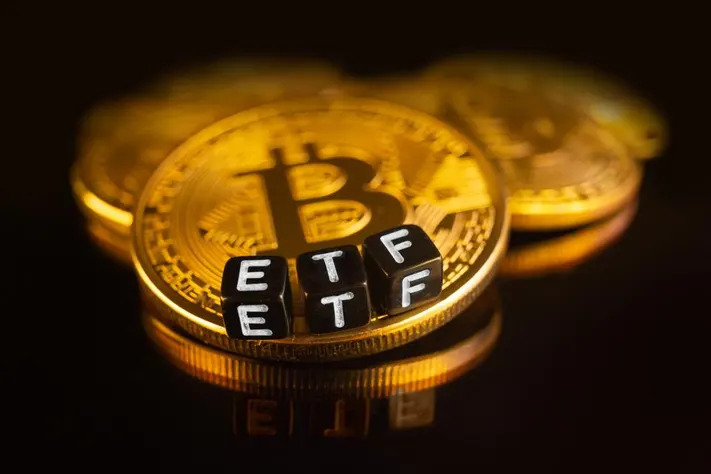
Bitcoin Charts and Technical Analysis
Understanding how to analyze Bitcoin price charts helps investors make informed decisions and identify potential trading opportunities.
Essential Chart Patterns
Several technical patterns frequently appear in Bitcoin charts:
- Support and Resistance: Key price levels where Bitcoin tends to find buying or selling pressure
- Trend Lines: Diagonal lines connecting price highs or lows that indicate market direction
- Moving Averages: Smoothed price lines that help identify trends and potential reversal points
- Volume Analysis: Transaction volume often confirms price movements and trend strength
Key Technical Indicators for Bitcoin
Popular indicators used by Bitcoin traders include:
- Relative Strength Index (RSI): Measures whether Bitcoin is overbought or oversold
- Moving Average Convergence Divergence (MACD): Identifies trend changes and momentum shifts
- Bollinger Bands: Shows price volatility and potential breakout levels
- Fear and Greed Index: Sentiment indicator that helps identify market extremes
Bitcoin-Specific Metrics
Unique metrics provide insights into Bitcoin’s network health and adoption:
- Hash Rate: Measures the total computational power securing the network
- Network Difficulty: Indicates how hard it is to mine new Bitcoin blocks
- Active Addresses: Shows the number of unique Bitcoin addresses used daily
- Exchange Inflows/Outflows: Indicates whether investors are buying or selling

Future of Bitcoin: Technology and Innovation
Bitcoin continues evolving through technological improvements and growing adoption across various sectors, positioning itself for the next phase of mainstream integration and technological advancement.
1. Lightning Network and Scalability Solutions
The Lightning Network represents Bitcoin’s primary scaling solution, fundamentally changing how the network handles transaction volume and costs. This second-layer technology creates payment channels that allow multiple transactions between parties without requiring blockchain confirmation for each individual transfer. As more users and businesses adopt Lightning, payment routing becomes increasingly efficient, creating network effects that benefit all participants.
The Lightning Network enables previously impossible use cases, particularly streaming micropayments for digital content and services. Companies across various industries are integrating Lightning infrastructure for customer payments and internal settlements, recognizing its potential to reduce costs while maintaining Bitcoin’s security guarantees. This adoption is driving innovation in payment processing and creating new business models that leverage instant, low-cost Bitcoin transactions.
2. Bitcoin in Web3 and DeFi Integration
Despite Ethereum’s historical dominance in decentralized finance, Bitcoin is becoming increasingly integrated into Web3 applications through innovative bridging technologies. Wrapped Bitcoin (WBTC) and similar protocols allow Bitcoin holders to participate in Ethereum-based DeFi protocols, unlocking liquidity and yield opportunities previously unavailable to Bitcoin users.
Cross-chain bridges are enabling Bitcoin to interact with multiple blockchain networks, expanding its utility beyond simple value transfer. Bitcoin-collateralized lending platforms now offer sophisticated financial products, allowing users to borrow against their Bitcoin holdings without selling their position. Additionally, new protocols like Ordinals are bringing NFT-like functionality directly to the Bitcoin blockchain, challenging traditional assumptions about Bitcoin’s capabilities.
3. Environmental Sustainability and Green Mining
The Bitcoin mining industry is undergoing a significant transformation toward environmental responsibility and sustainable practices. Mining operations worldwide are transitioning to renewable energy sources, including solar, wind, and hydroelectric power, driven by both environmental concerns and economic incentives from cheaper renewable electricity.
Innovative projects are finding creative ways to utilize the waste heat generated by mining operations, including greenhouse agriculture and residential heating systems. Major mining companies are making public commitments to carbon-neutral operations, implementing comprehensive sustainability strategies. Continuous improvements in mining hardware efficiency are reducing energy consumption per hash, making the network more environmentally friendly while maintaining its security properties.
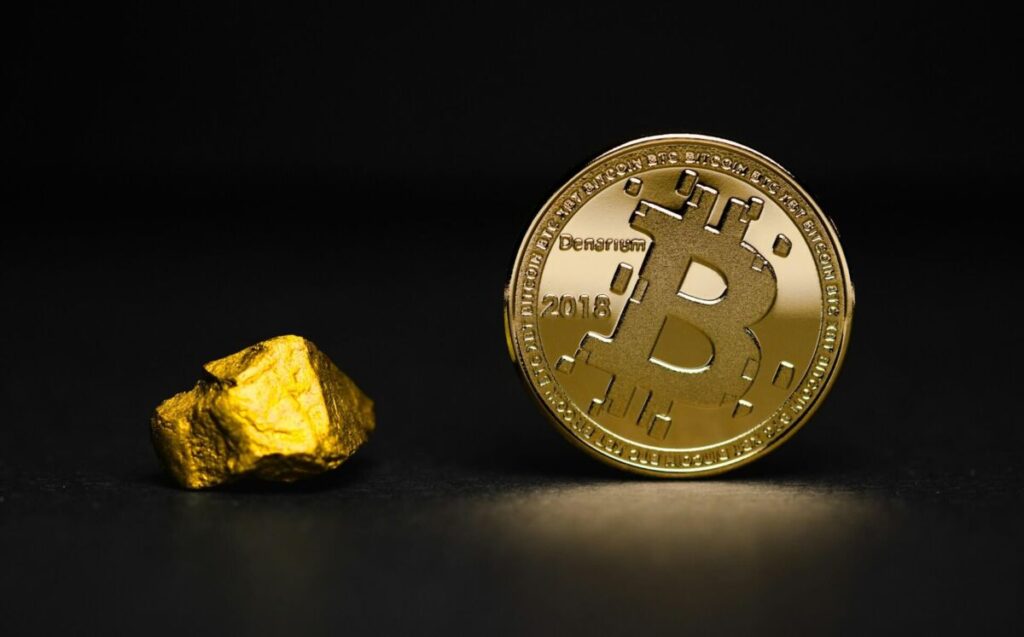
Bitcoin Investment Strategies and Risk Management
Successful Bitcoin investment requires understanding various strategies and implementing appropriate risk management techniques to navigate the volatile cryptocurrency market effectively.
1. Dollar-Cost Averaging Strategy
Dollar-cost averaging (DCA) involves purchasing fixed dollar amounts of Bitcoin at regular intervals, regardless of current market price. This strategy reduces the impact of market volatility by spreading purchases over time, eliminating the need to time market peaks and valleys perfectly. DCA works particularly well for investors with multi-year investment horizons who want to build their Bitcoin position gradually.
The primary benefit of DCA lies in removing emotional decision-making from the investment process. By committing to regular purchases regardless of market conditions, investors avoid the common pitfalls of buying during euphoric market peaks or panic-selling during market downturns. This disciplined approach has historically provided superior returns compared to attempting to time the market, especially for retail investors who lack sophisticated trading tools and market analysis capabilities.
2. HODLing Versus Active Trading Approaches
The cryptocurrency community has developed two primary investment philosophies that reflect different risk tolerances and time commitments. HODLing, derived from “Hold On for Dear Life,” represents a long-term strategy focused on Bitcoin’s multi-year appreciation potential. This approach requires minimal trading activity, reducing fees and tax complications while demanding strong conviction and emotional resilience during periods of significant volatility.
Active trading, by contrast, attempts to profit from short-term price movements through frequent buying and selling. This approach requires significant time commitment, market knowledge, and emotional discipline to execute successfully. Most retail traders underperform simple buy-and-hold strategies due to transaction costs, tax implications, and the difficulty of consistently timing market movements. Historical data strongly supports long-term holding strategies for patient investors willing to weather short-term volatility.
3. Essential Risk Management Principles
Protecting Bitcoin investments involves implementing several fundamental risk management strategies that help preserve capital while allowing for potential growth. Position sizing represents the most critical element, ensuring that Bitcoin investments never exceed an amount the investor can afford to lose completely. This principle becomes especially important given Bitcoin’s historical volatility and the cryptocurrency market’s relatively young development stage.
Diversification plays a crucial role in overall portfolio health, with Bitcoin representing only a portion of a well-balanced investment strategy. Security measures form another essential component, requiring proper wallet security protocols and backup procedures to protect against theft or loss. Tax planning considerations help investors understand the implications of Bitcoin transactions in their specific jurisdiction, while staying informed about regulatory changes and market developments helps anticipate potential impacts on investment performance.
*BTN- Trade Bitcoin on MEXC Now&BTNURL=https://www.mexc.com/price/BTC *
Global Bitcoin Adoption and Cryptocurrency Regulation
Bitcoin’s legal status and adoption vary significantly across different countries and jurisdictions, creating a complex regulatory landscape that continues evolving as governments grapple with cryptocurrency integration.
Countries Embracing Bitcoin Innovation
Several nations have implemented Bitcoin-friendly policies that position them as leaders in cryptocurrency adoption. El Salvador made history in 2021 by becoming the first country to adopt Bitcoin as legal tender, followed by the Central African Republic in 2022. These pioneering moves demonstrate how smaller nations can leverage Bitcoin to potentially improve financial inclusion and economic sovereignty.
The United States has developed an increasingly supportive regulatory environment, highlighted by the approval of Bitcoin ETFs in January 2024 and growing institutional adoption. Germany treats long-term Bitcoin holdings as tax-free after one year of ownership, creating favorable conditions for individual investors. Switzerland has established itself as a global “Crypto Valley,” attracting blockchain companies and implementing comprehensive regulatory frameworks that balance innovation with consumer protection.
Regulatory Evolution in 2025
The regulatory landscape continues evolving with several significant developments shaping Bitcoin’s global acceptance. Discussions about strategic Bitcoin reserves are gaining momentum among various governments, with some considering adding Bitcoin to their national treasuries as a hedge against currency debasement and inflation. Major jurisdictions are developing comprehensive cryptocurrency regulations that provide clarity for businesses and investors while addressing concerns about money laundering and consumer protection.
International cooperation on cryptocurrency standards and anti-money laundering measures is increasing, with global organizations working to create consistent regulatory approaches. Clear regulations for stablecoins are emerging that affect the broader cryptocurrency ecosystem, providing the regulatory certainty that institutional investors and corporations need to confidently integrate Bitcoin into their operations.
Central Bank Digital Currencies and Bitcoin Coexistence
Many central banks worldwide are developing digital versions of their national currencies, creating an interesting dynamic with decentralized cryptocurrencies like Bitcoin. Central Bank Digital Currencies (CBDCs) maintain government control and oversight while offering some benefits of digital currency technology. However, these government-issued digital currencies serve different purposes than Bitcoin, with CBDCs focusing on maintaining monetary policy control while Bitcoin offers financial sovereignty and censorship resistance.
The relationship between CBDCs and Bitcoin appears likely to be one of coexistence rather than direct competition. Bitcoin’s success has encouraged central bank digital currency development, demonstrating public appetite for digital payment systems. However, government digital currencies may compete with Bitcoin for certain use cases, particularly in domestic payment systems and areas where regulatory compliance is paramount. The competitive dynamics between these different approaches to digital money will likely shape the future of global financial systems.
Bitcoin’s legal status and adoption continue evolving… To understand how Bitcoin reached this level of global recognition, read our complete Bitcoin history, tracing its journey from experimental currency to institutional asset.
*BTN- Trade Bitcoin on MEXC Now&BTNURL=https://www.mexc.com/price/BTC *
Conclusion
Bitcoin has fundamentally transformed how we think about money, financial sovereignty, and digital ownership. From its humble beginnings as an experimental peer-to-peer electronic cash system, Bitcoin has evolved into a globally recognized store of value and investment asset that challenges traditional financial systems.
The cryptocurrency’s fixed supply, decentralized nature, and transparent blockchain technology offer compelling alternatives to conventional monetary systems. As institutional adoption accelerates and regulatory clarity improves, Bitcoin continues building the foundation for a more open and inclusive financial future.
Whether viewed as digital gold, a payment network, or revolutionary technology, Bitcoin has proven its resilience and utility over more than a decade of operation. The network’s security, growing adoption, and technological improvements position it well for continued relevance in the evolving digital economy.
For investors considering Bitcoin exposure, understanding the technology, risks, and investment strategies remains essential. While Bitcoin’s volatility creates both opportunities and challenges, its long-term trajectory suggests continued importance in the global financial landscape as we progress through 2025 and beyond.
Important Disclaimer: This article is for educational purposes only and does not constitute financial advice. Bitcoin investing involves significant risk, including the potential loss of principal. Always conduct your own research and consult with qualified financial advisors before making investment decisions.
Popular Articles

What is the x402 Protocol? Understanding the 5 Core Advantages of HTTP-Native Payment Standards
TL;DR1)The x402 protocol activates the HTTP 402 status code that has been dormant for 30 years, enabling native internet payment capabilities.2)Zero protocol fees and 2-second settlement times fundame

What is Ethereum and How Does it Work? Complete Guide to ETH Price and Investment
Ethereum stands as the world’s second-largest cryptocurrency by market capitalization and the foundational platform powering the decentralized web revolution. This comprehensive guide explores everyth

What is XRP? Complete Guide to Ripple’s Cryptocurrency and Prediction
XRP stands as one of the world’s largest cryptocurrencies, currently ranking as the 3 digital asset by market capitalization with over $180 billion in total value. Unlike traditional cryptocurrencies

What is Virtuals Protocol ($VIRTUAL)? x402 Agent Commerce Protocol and AI Agent Economy
TL;DR1)Virtuals Protocol is an on-chain infrastructure for the “Agentic Economy,” enabling AI agents to autonomously trade, collaborate, and create value through standardized blockchain commerce.2)Its
Hot Crypto Updates
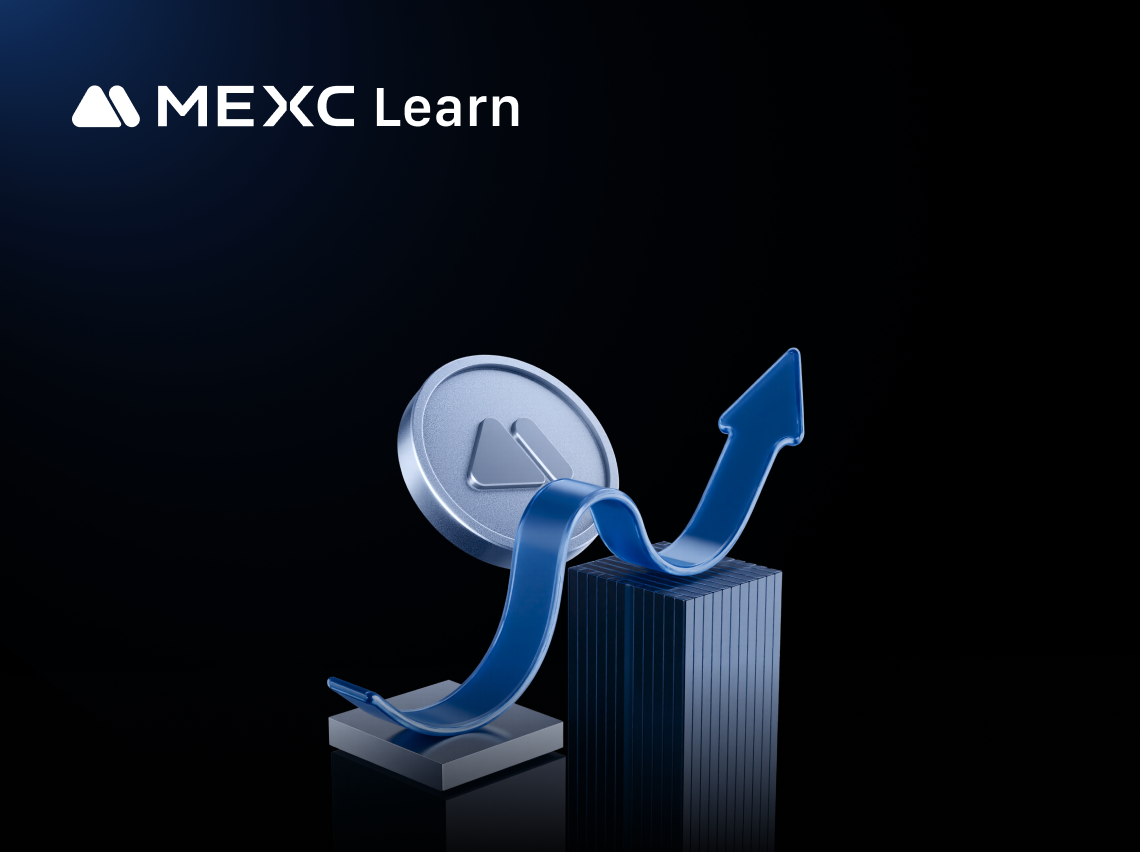
Chill House (CHILLHOUSE) Latest Price: Fresh Market Updates
The crypto market changes minute by minute, and the latest Chill House (CHILLHOUSE) price offers the most up-to-date snapshot of its value. In this article, we highlight the newest movements, fresh da
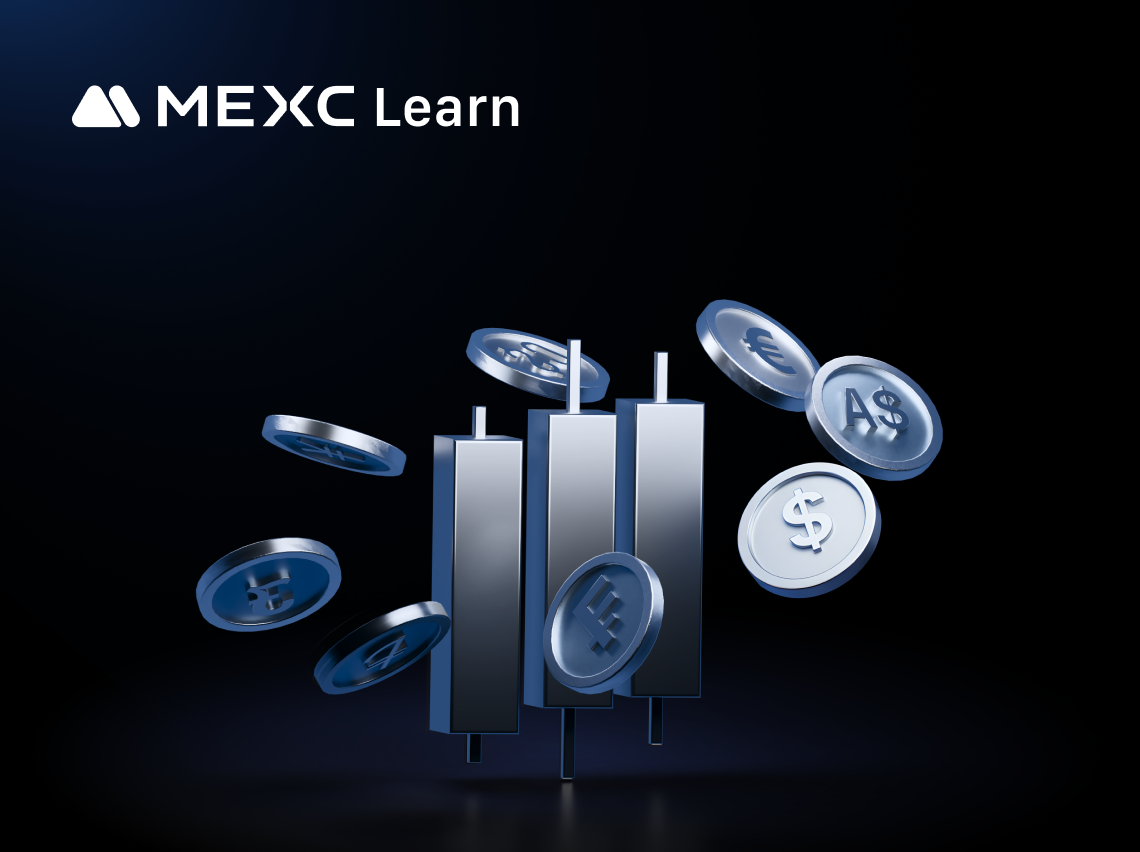
Chill House (CHILLHOUSE) Real-Time Price and Market Analysis
The crypto market moves fast, and the live Chill House (CHILLHOUSE) price helps traders stay up to date. This article highlights today's CHILLHOUSE price analysis, short-term performance, and the main
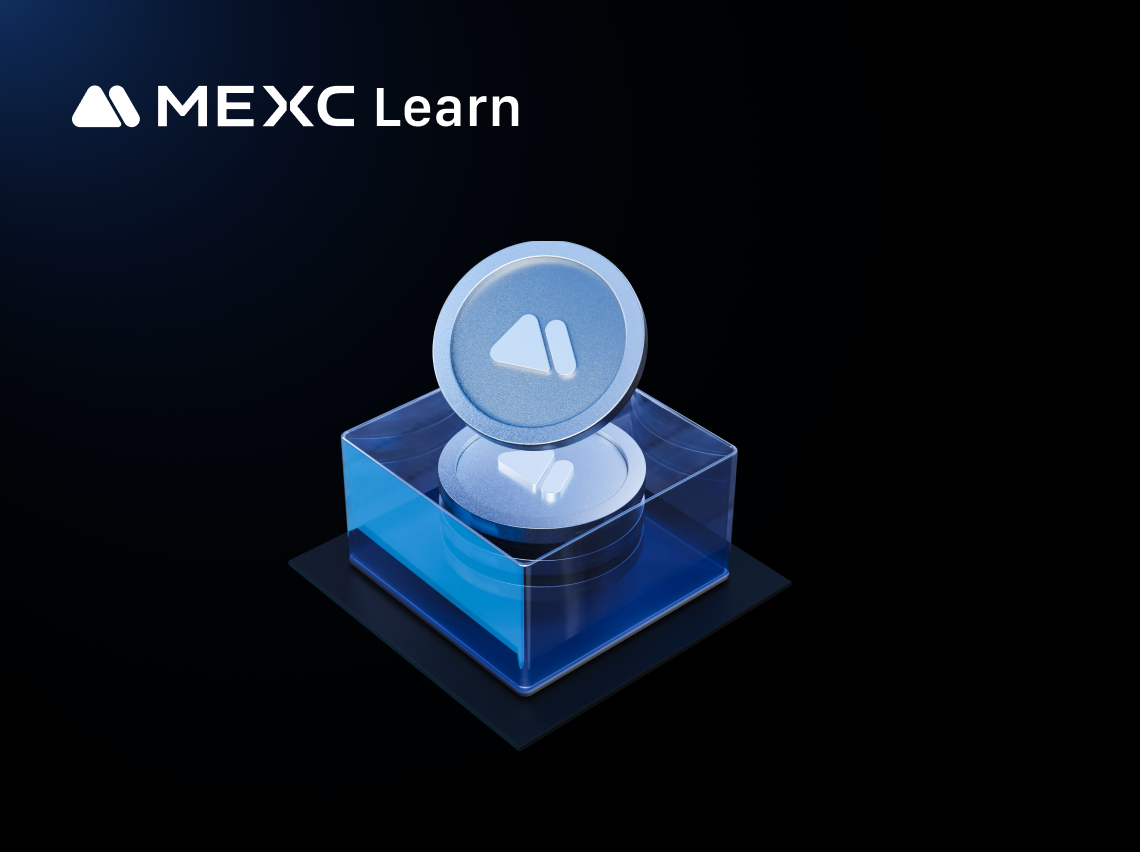
Chill House (CHILLHOUSE) Price History: Key Milestones & Trends
The historical Chill House (CHILLHOUSE) price data provides a clear view of how the token has performed over time. By analyzing past price movements, crypto traders can identify price trends, measure
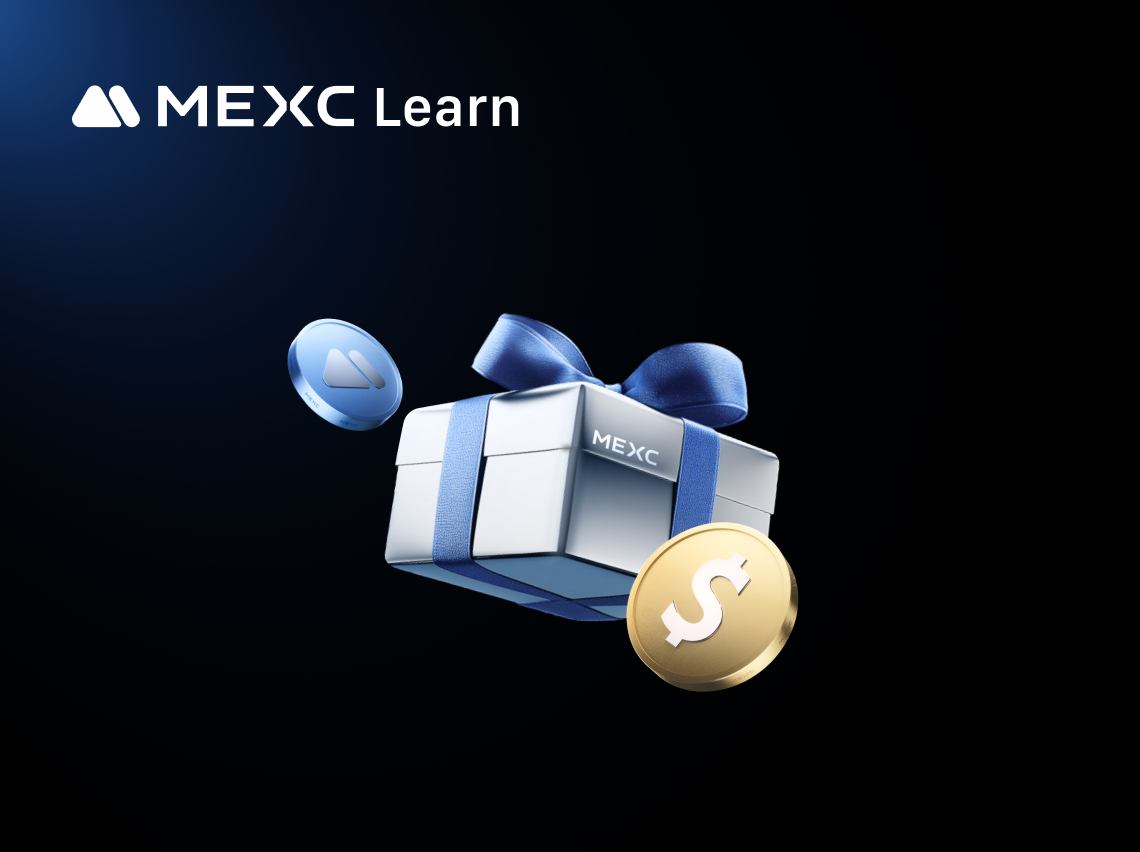
Chill House (CHILLHOUSE) ATH Price History: Record Highs & Insights
The ATH price history of Chill House (CHILLHOUSE) shows the highest points the token has ever reached, providing valuable insights for traders and investors about market peaks and potential resistance
Trending News
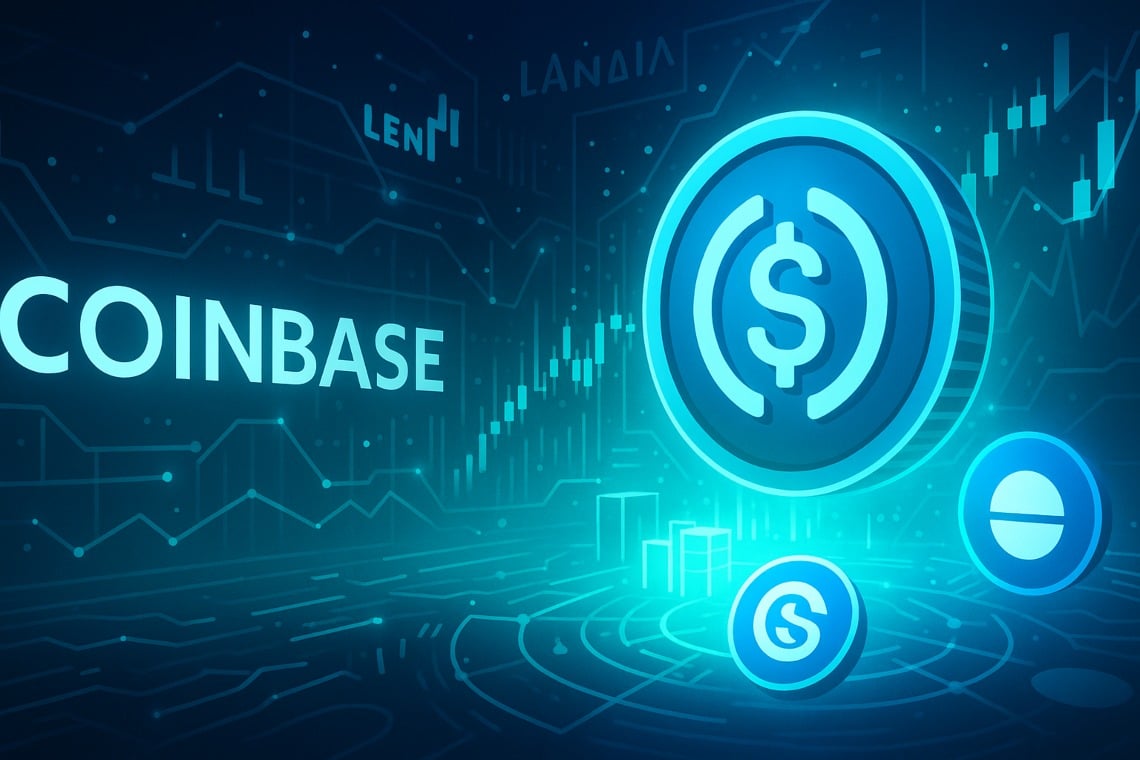
Coinbase launches USDC lending on Base: up to 10.8% APY
Up to 10.8% APY on USDC, directly from the Coinbase app: this is the new offer from the exchange integrated directly with Base.

Trading time: Tonight, the US GDP and the upcoming non-farm data will become the market focus. Institutions are bullish on BTC to $120,000 in the second quarter.
Daily market key data review and trend analysis, produced by PANews.

IP Hits $11.75, HYPE Climbs to $55, BlockDAG Surpasses Both with $407M Presale Surge!
The post IP Hits $11.75, HYPE Climbs to $55, BlockDAG Surpasses Both with $407M Presale Surge! appeared on BitcoinEthereumNews.com. Crypto News 17 September 2025 | 18:00 Discover why BlockDAG’s upcomi
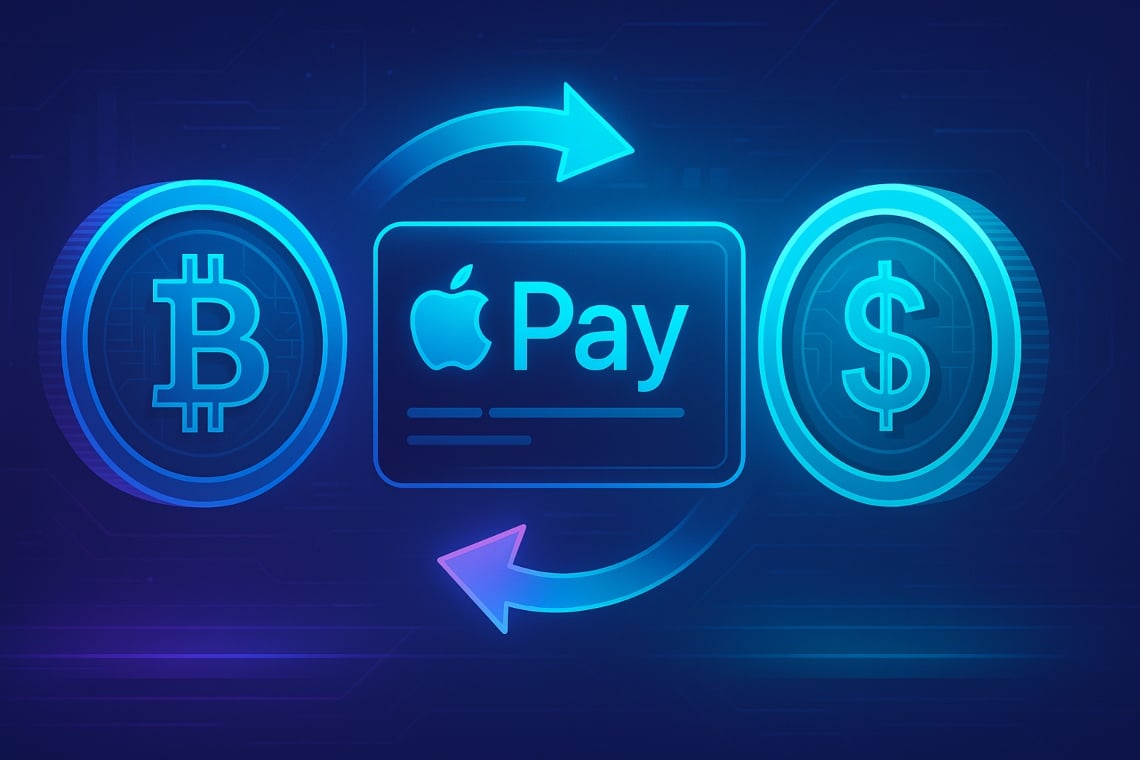
Unlimit revolutionizes payments: now Apple Pay available for crypto-fiat disbursements
Unlimit has announced an innovation set to change the landscape of digital payments: the integration of Apple Pay for disbursements.
Related Articles

Bitcoin (BTC): Complete Guide to the World’s First Cryptocurrency
Bitcoin has transformed from an experimental digital currency worth fractions of a penny to a revolutionary financial asset reaching new record highs in 2025. As the world’s first cryptocurrency, Bitc

What is the x402 Protocol? Understanding the 5 Core Advantages of HTTP-Native Payment Standards
TL;DR1)The x402 protocol activates the HTTP 402 status code that has been dormant for 30 years, enabling native internet payment capabilities.2)Zero protocol fees and 2-second settlement times fundame

What is Ethereum and How Does it Work? Complete Guide to ETH Price and Investment
Ethereum stands as the world’s second-largest cryptocurrency by market capitalization and the foundational platform powering the decentralized web revolution. This comprehensive guide explores everyth

What is XRP? Complete Guide to Ripple’s Cryptocurrency and Prediction
XRP stands as one of the world’s largest cryptocurrencies, currently ranking as the 3 digital asset by market capitalization with over $180 billion in total value. Unlike traditional cryptocurrencies
